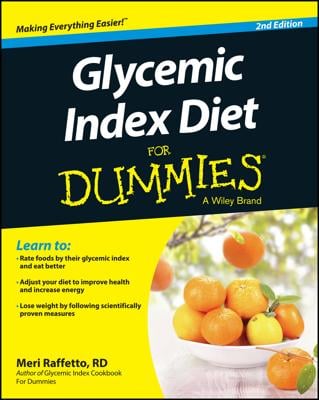Everything you eat and do affects your metabolism, or the rate at which your body burns calories. A glycemic index diet helps you increase your metabolic rate for faster weight loss. Your basal metabolic rate, abbreviated as BMR and commonly referred to simply as metabolic rate, is the amount of calories your body burns at rest for basic functioning.
Obtaining an accurate metabolic rate is extremely difficult because numerous factors (including eating, movement, and temperature) can affect the results. Many methods exist for calculating your metabolic rate, but one of the best ways to get an accurate measurement of it is to use equipment that measures your resting metabolic rate (similar to your BMR) by examining your oxygen input and carbon dioxide output. Several hand-held devices are available today for the public, but these can be cost prohibitive and not completely accurate.
To determine your personal metabolic rate for much less, ask a health professional for a one-time test. Contact your local fitness center or registered dietician for recommendations.
If you’re measuring your metabolism (or calorie needs) with a calculation, make sure the calculation you’re working with takes the following into account for a more accurate estimate:
Your age
Your gender
Your activity level
A classic calculation for determining one’s metabolic rate is the Harris Benedict Equation. It may seem like quite a bit of math, but it’s really rather simple to complete:
BMR Calculation for Women: 655 + (4.35 × weight in pounds) + (4.7 × height in inches) – (4.7 × age in years)
BMR Calculation for Men: 66 + (6.23 × weight in pounds) + (12.7 × height in inches) – (6.76 × age in years)
To really determine your body’s energy needs, you should also account for how often you exercise. Use this table to adjust the Harris Benedict Equation to account for your physical activity level:
| Amount of Exercise | Daily Calories Needed |
|---|---|
| Little to no exercise | BMR x 1.2 |
| Light exercise (1 to 3 days per week) | BMR x1.375 |
| Moderate exercise (3 to 5 days per week) | BMR x 1.55 |
| Heavy exercise (6 to 7 days per week) | BMR x 1.725 |
| Very heavy exercise (intense workouts twice per day) | BMR x 1.9 |
The number you calculate is the amount of calories it’d take to maintain your current weight based on your age, height, weight, gender, and physical activity level. So if weight loss is your goal, try to cut out anywhere from 200 to 500 calories per day to achieve a .5- to 1-pound weight loss per week.

